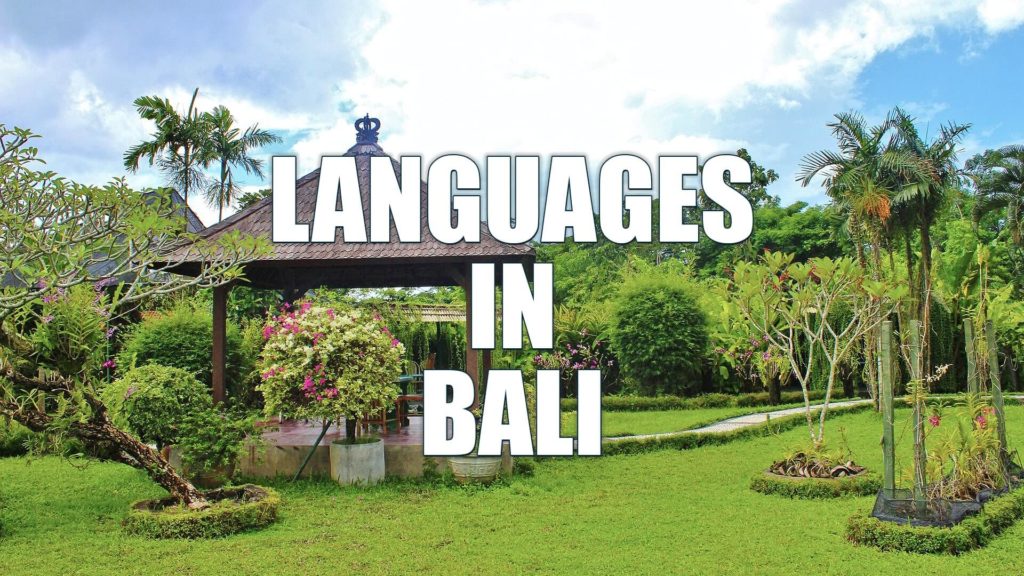Languages in Bali

Table of Contents
Languages Spoken in Bali
Bali is a part of Indonesia, a country with a remarkably diverse linguistic landscape. While Bahasa Indonesia, the official language of Indonesia, is spoken throughout the country, the Balinese people also have their own unique language. Balinese, although not recognized as an official language, is widely spoken by the locals on the island.
In addition to Bahasa Indonesia and Balinese, English has become increasingly prevalent in Bali, mainly due to the high number of tourists visiting each year. You will find that many people working in the tourism industry, such as hotel staff, restaurant servers, and shopkeepers, have a good command of English. This makes communication relatively easy in popular tourist areas.
It’s worth noting that Bali’s cultural heritage is deeply rooted in Hinduism, and Sanskrit, an ancient language, holds significance in religious ceremonies and rituals. Some Hindu priests in Bali still use Sanskrit in their practices, and much of the Hindu literature was written in this language.
The Significance of Language in Balinese Culture
Language plays a pivotal role in Balinese culture. The Balinese people highly appreciate visitors who make an effort to learn and speak a few words in their language. The simple act of greeting someone in Balinese or expressing gratitude can go a long way in building positive connections and fostering mutual respect.
By immersing yourself in the local language, you gain a deeper understanding of the Balinese culture and its nuances. You can engage in meaningful conversations, learn about traditional customs, and create memorable experiences that transcend the typical tourist encounter.
Learning Balinese: A Cultural Gateway
While fluency in Balinese may not be necessary for your trip, learning some basic words and phrases can greatly enhance your experience and interactions with the locals. Here are a few essential Balinese phrases that will help you navigate your way around the island:
Greetings and Basic Expressions
- “Om Swastiastu” – A traditional Balinese greeting, similar to saying “hello” or “good day.”
- “Suksma” – Thank you
- “Matur suksma” – Thank you very much
- “Selamat pagi” – Good morning
- “Selamat siang” – Good afternoon
- “Selamat sore” – Good evening
- “Selamat malam” – Good night
Asking for Directions
- “Di mana…?” – Where is…?
- “Kiri” – Left
- “Kanan” – Right
- “Lurus” – Straight ahead
Ordering Food and Drinks
- “Nasi goreng, tolong” – Fried rice, please
- “Air putih, tolong” – Water, please
- “Satu lagi” – One more, please
The Multilingual Landscape of Indonesia
Indonesia, as a whole, is a linguistically diverse country with around 700 different languages and dialects spoken across its vast archipelago. Due to this linguistic diversity, many Indonesians are bilingual or even trilingual.
Apart from Bahasa Indonesia and Balinese, several other languages are spoken in Bali, reflecting the diverse backgrounds of the local population. In tourist areas, it is not uncommon to find staff who can converse in languages such as German, Chinese, Spanish, and even Russian, catering to the needs of international visitors.
Tips for Effective Communication in Bali
While English is widely spoken in Bali, there are some practical tips to keep in mind to ensure effective communication during your stay:
- Learn Basic Phrases: As mentioned earlier, learning a few basic Balinese phrases can help you navigate everyday situations and show respect to the locals.
- Speak Slowly and Clearly: When communicating in English, speak slowly and clearly to ensure your message is understood. Avoid using complex vocabulary or idiomatic expressions that may confuse non-native English speakers.
- Use Non-Verbal Communication: Non-verbal cues such as gestures, facial expressions, and body language can help convey meaning, especially when there is a language barrier.
- Be Patient and Respectful: Remember that not everyone you encounter will have the same level of English proficiency. Be patient and respectful, and try to find alternative ways to communicate if necessary.
- Engage in Cultural Experiences: Participating in traditional Balinese activities, such as attending temple ceremonies or taking part in cooking classes, can provide unique opportunities to interact with locals and learn more about their language and culture.
